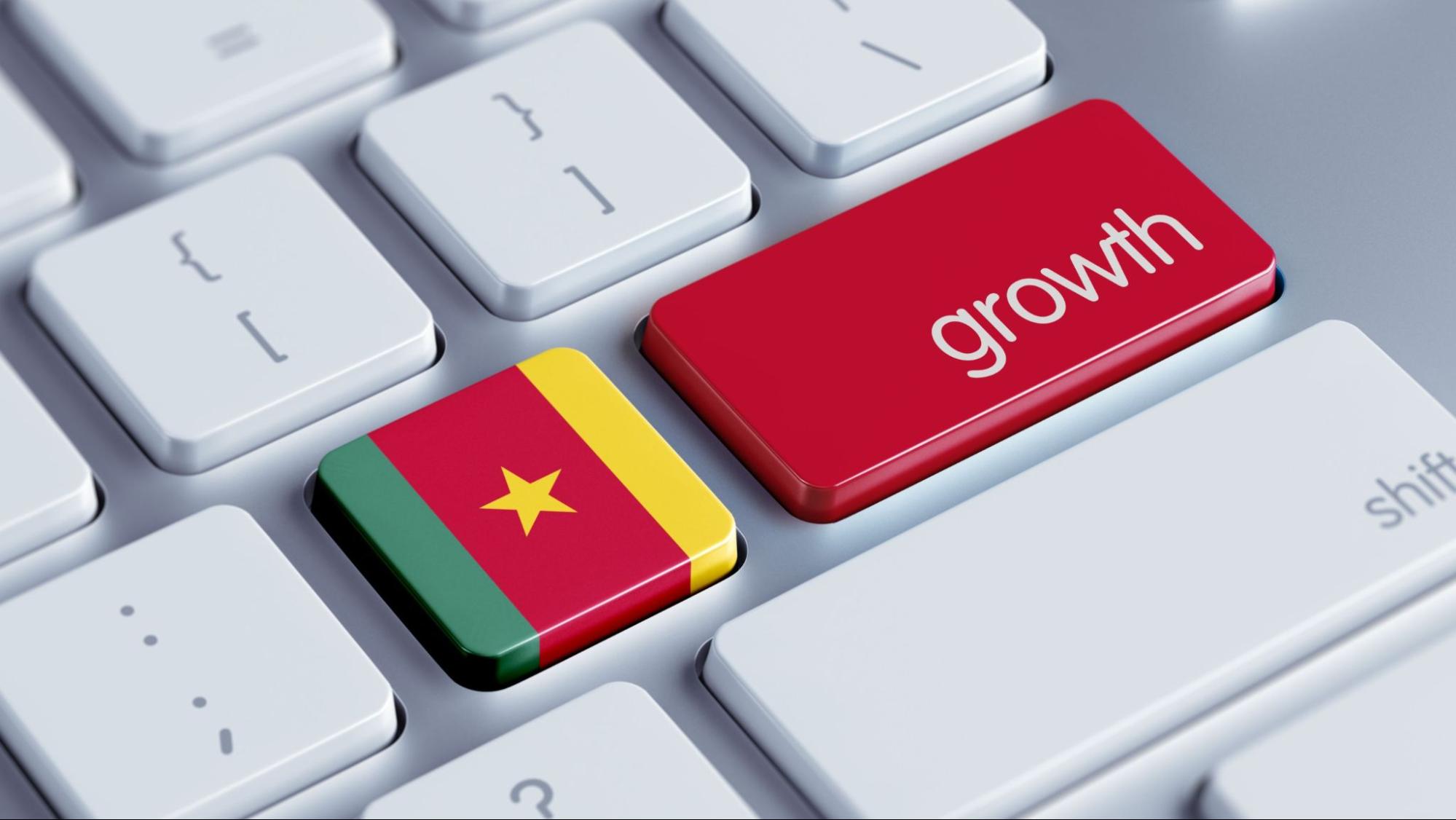Cameroon Top Source Markets
Cameroon's top 10 leading suppliers encompass a diverse group of countries that significantly impact its trade dynamics and economic development, offering a wide array of goods and services essential for the nation's growth and stability.

- China
China is the leading supplier of goods to Cameroon, providing a substantial portion of the country's imports. The main items imported from China include electronics, machinery, and textiles.

- France
France is another important supplier of goods to Cameroon, focusing on construction materials, food products, and vehicles. Construction materials are essential for infrastructure development in Cameroon, and French food products are often preferred for their quality and variety.

- Belgium
Belgium supplies vital chemicals, machinery, and pharmaceuticals to Cameroon, supporting industries like manufacturing, healthcare, and agriculture. Belgian pharmaceuticals are especially crucial for Cameroon's healthcare, providing essential medicines and medical equipment.

- Netherlands
The Netherlands is a significant supplier of goods to Cameroon, with a focus on machinery, transport equipment, and chemicals. Dutch machinery and transport equipment help boost productivity and efficiency, while chemicals have applications in various industries, including manufacturing and agriculture.

- United States
The United States supplies Cameroon with machinery, electronics, and transport equipment, aiding in the modernization of industries and supporting manufacturing and technology sectors. American products are crucial for Cameroon's logistics and transportation infrastructure.
Alt tag:
View of the United States flag and the Statue of Liberty on Liberty Island on October 10, 2019 in New York

- Italy
Italy is a major supplier of goods to Cameroon, specialising in machinery, transport equipment, and food products. Italian machinery aids in industrial processes, and transport equipment supports logistics and transportation.

- Germany
Germany is a significant supplier of goods to Cameroon, with a focus on machinery, electronics, and chemicals. German machinery and electronics are known for their precision and innovation, contributing to Cameroon's manufacturing and technology sectors.

- Spain
Spain is also a significant supplier of goods to Cameroon, particularly in the areas of transport equipment, machinery, and food products. Spanish transport equipment supports the country's transportation infrastructure, while machinery aids in industrial processes.

- India
India is a major supplier of goods to Cameroon, specialising in pharmaceuticals, machinery, and textiles. Indian pharmaceuticals contribute significantly to the healthcare sector in Cameroon. Indian machinery is used in various industries, and textiles find applications in the country's textile and apparel manufacturing.

- South Korea
South Korea is a significant supplier of goods to Cameroon, with a focus on electronics, machinery, and transport equipment. South Korean electronics are popular among consumers and are used in various technological applications. Korean machinery and transport equipment enhance Cameroon's industrial and transportation capabilities.

Importance of Top Source Markets to Cameroon's Economy
Cameroon's top source markets play a pivotal role in fueling economic growth, providing essential imports, driving industrialization, and contributing to consumer choices in the country.

- Machinery
Cameroon imports diverse machinery for construction, agriculture, manufacturing, and energy sectors, supporting infrastructure development and industrial growth.
- Electronics
Cameroon imports consumer electronics, telecom gear, computer hardware, and electronic components, fostering technological progress and connectivity in the nation.
- Textiles
Cameroon imports textiles, including fabrics, clothing, and textile products, to meet consumer demand and support the garment industry, covering both raw materials like cotton and finished products like clothing and linens.
- Vehicles
Vehicle imports into Cameroon encompass automobiles, trucks, motorcycles, and other forms of transportation. These imports are essential for personal transportation, commercial logistics, and public transportation services. Vehicle imports contribute to the mobility and accessibility of goods and people within the country.
- Chemicals
Cameroon imports a broad range of chemicals, including industrial chemicals, fertilisers, pesticides, and pharmaceutical raw materials, to support agriculture, manufacturing, and healthcare industries, enabling agricultural production, industrial processes, and pharmaceutical manufacturing.
- Pharmaceuticals
Pharmaceutical imports primarily consist of medicines, medical equipment, and healthcare products. These imports are crucial for the healthcare sector, ensuring the availability of essential drugs and medical supplies. Pharmaceuticals contribute to improving public health and medical services in Cameroon.
- Food and Beverages
Cameroon's imports in the food and beverages category encompass grains, processed foods, beverages, and culinary ingredients, ensuring food security and supporting the local food and beverage industry through ingredient sourcing for processing and manufacturing.
- Transportation Equipment
Cameroon imports transportation equipment such as aircraft, ships, trains, and components, essential for developing and modernising transportation infrastructure and services, contributing to sector expansion.
Challenges and Opportunities of Trade with Top Source Markets
Explore the challenges and opportunities of trade with top source markets, gaining insights into the dynamics and potential benefits of global commerce.
- Trade Imbalance
One significant challenge can be a trade imbalance, where Cameroon imports more than it exports to its top source markets, leading to a negative trade balance. This can strain foreign exchange reserves and create economic vulnerabilities.
- Dependency on a Few Key Partners
Overreliance on a limited number of top source markets can be risky, as disruptions in these countries' economies or trade policies can negatively impact Cameroon's trade and economy.
- Quality and Safety Standards
Meeting the quality and safety standards of top source markets can be demanding. Failure to comply can result in trade barriers and rejection of goods, affecting exports.
- Infrastructure Limitations
Inadequate infrastructure, such as roads, ports, and logistics, can hinder the efficient movement of goods, increasing transportation costs and delays in trade.
- Tariffs and Trade Barriers
Tariffs, non-tariff barriers, and protectionist measures imposed by source markets can make Cameroonian products less competitive and reduce access to these markets.
- Currency Fluctuations
Exchange rate volatility can affect the cost of imports and exports, potentially reducing the competitiveness of Cameroonian products in global markets.
- Limited Product Diversification
Reliance on a narrow range of products for trade can make Cameroon vulnerable to market fluctuations, changing consumer preferences, or shifts in global demand.
- Inadequate Trade Infrastructure
Cameroon may face challenges related to customs procedures, trade facilitation, and export documentation, which can lead to delays and inefficiencies in trade processes.
Future of Cameroon's Trade with Top Source Markets
The future of Cameroon's trade with its top source markets is influenced by various factors, including economic trends, geopolitical developments, and trade policies. Here are six points that help explain the potential future trajectory of Cameroon's trade:
- Economic Growth and Diversification
Cameroon's economic growth and diversification open avenues for expanding trade with top source markets, driven by rising consumer demand and the growth of new industries, benefiting both imports and exports.
- Trade Agreements and Partnerships
Cameroon's engagement in trade pacts and collaborations, including EU bilateral agreements and AfCFTA regional bloc participation, is pivotal for future trade. These initiatives unlock fresh markets and reduce trade impediments, impacting trade dynamics positively.
- Export Diversification
To mitigate risks associated with relying on a few key products for exports, Cameroon is likely to focus on export diversification. This strategy can involve expanding non-oil exports, such as agricultural products, textiles, and manufactured goods, to reduce vulnerability to commodity price fluctuations.
- Infrastructure Development
Investments in infrastructure, including transportation and logistics, will be crucial for enhancing trade efficiency. Improved infrastructure will reduce transportation costs, decrease trade bottlenecks, and enable Cameroon to access more distant markets.
- Quality Standards and Compliance
Meeting international quality and safety standards will be a priority. Cameroon's exporters will need to invest in product quality and compliance with regulations to maintain and expand their presence in top source markets.
- Digitalization and E-commerce
The growth of digitalization and e-commerce presents opportunities for Cameroon to expand its reach in top source markets. Online platforms can facilitate cross-border trade, enabling small and medium-sized enterprises (SMEs) to participate more actively in international trade.
FAQS
What are Cameroon's top source markets for imports?
Cameroon's top source markets for imports include China, France, Belgium, the Netherlands, the United States, Italy, Germany, Spain, India, and South Korea.
What are the main products that Cameroon imports from its top source markets?
Cameroon imports a wide range of products from its top source markets, including machinery, electronics, textiles, vehicles, chemicals, pharmaceuticals, food and beverages, and transportation equipment.
Why is China a significant source market for Cameroon's imports?
China is a leading source market due to its competitive pricing, diverse product range, and strong manufacturing capabilities. Cameroon imports electronics, machinery, textiles, and other goods from China.
How does trade with France benefit Cameroon?
Trade with France provides Cameroon with construction materials, food products, and vehicles, supporting infrastructure development, food security, and transportation.
How does trade with the United States impact Cameroon's economy?
The United States supplies machinery, electronics, and transport equipment, which aid Cameroon's industrialization, technological advancement, and transportation infrastructure development.
What are the key benefits of trading with India and South Korea for Cameroon?
India supplies pharmaceuticals, machinery, and textiles, supporting healthcare, industrialization, and the textile industry. South Korea provides electronics, machinery, and transport equipment, enhancing technological capabilities and transportation.
What challenges does Cameroon face in trade with its top source markets?
Challenges include trade imbalances, reliance on a few key partners, quality and safety standards compliance, infrastructure limitations, tariffs, currency fluctuations, limited product diversification, and trade infrastructure issues.
Applying for a Cameroon eVisa
- Step 1: Complete the online application form with your personal details and passport information.
- Step 2: Proceed to securely pay online using your credit card.
- Step 3: Check your email for payment confirmation and receipt of your Cameroon eVisa, which will be sent electronically.

